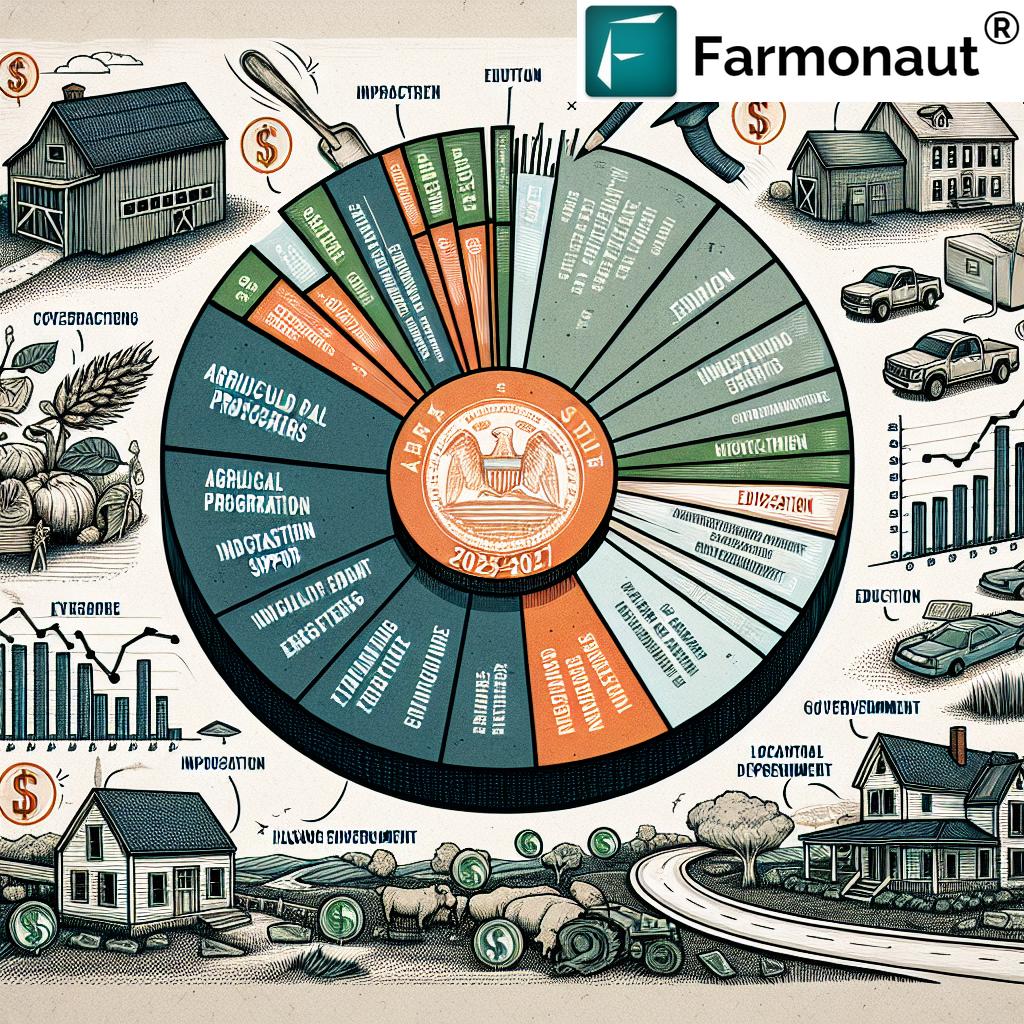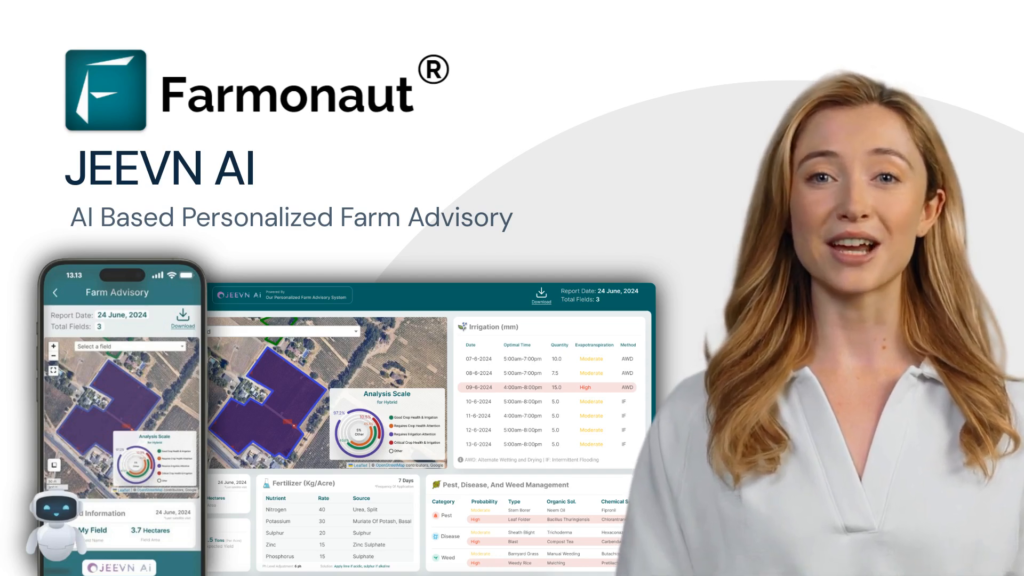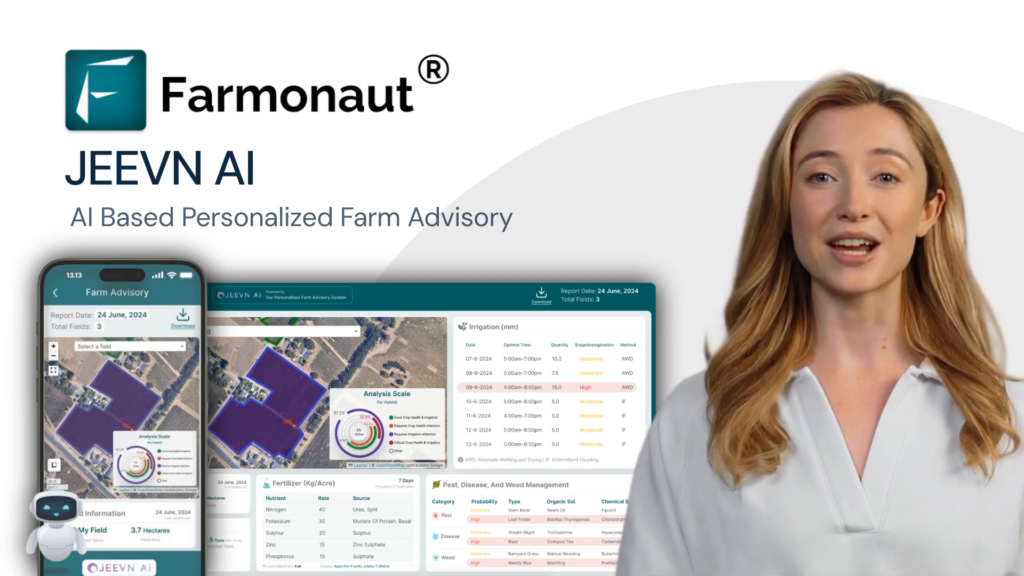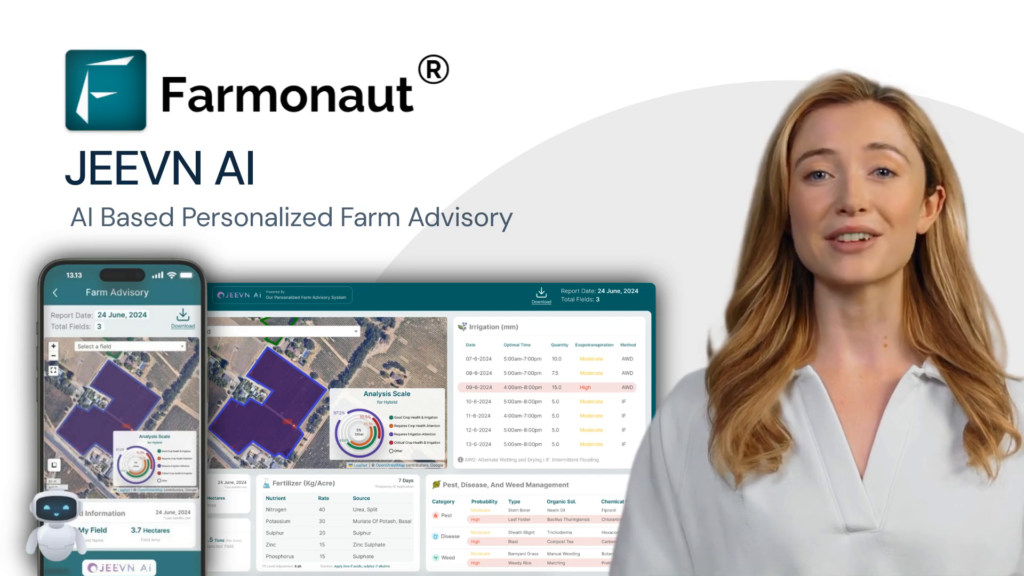Wisconsin’s 2025-2027 Budget: Boosting Agricultural Conservation and Local Development Initiatives
“Wisconsin’s 2025-2027 budget proposal aims to expand county conservation staffing, supporting sustainable farming practices across the state.”
As we delve into the intricacies of Wisconsin’s latest state budget proposal, we find ourselves at the cusp of a transformative period for agricultural conservation and local development initiatives. The 2025-2027 budget, recently unveiled by Governor Tony Evers before the Wisconsin State Legislature in Madison, presents a comprehensive plan that aims to revitalize the state’s agricultural economy while simultaneously addressing critical local government needs.
In this detailed analysis, we’ll explore how this proposed budget could shape the future of Wisconsin’s farming communities, local infrastructure, and overall economic landscape. From bolstering farmland preservation efforts to enhancing educational investments, this budget proposal seeks to strike a delicate balance between economic growth and environmental stewardship.
The Agricultural Conservation Cornerstone
At the heart of Wisconsin’s 2025-2027 budget proposal lies a strong commitment to agricultural conservation programs. These initiatives are designed to protect the state’s rich farming heritage while promoting sustainable practices for the future.
- Purchase of Agricultural Conservation Easements (PACE) Program: This program is set to receive a significant boost, allowing for the preservation of more farmland across the state.
- Farmland Preservation Program: Increased funding here aims to incentivize farmers to maintain their land for agricultural use, ensuring long-term food security for Wisconsin.
- Expanded County Conservation Staffing: By increasing the number of conservation professionals at the county level, the state aims to provide more hands-on support for farmers implementing sustainable practices.
These investments reflect a clear understanding of the critical role that agriculture plays in Wisconsin’s economy and the importance of preserving farmland for future generations.

Empowering Local Governments
The budget proposal doesn’t stop at agricultural conservation. It also places a strong emphasis on empowering local governments through increased funding and development initiatives:
- Local Road Projects: A substantial increase in funding for local road projects aims to improve infrastructure and connectivity across Wisconsin’s communities.
- Capital Projects Fund: The budget allocates $125 million for local capital projects, providing municipalities with the resources to undertake crucial development initiatives.
- Housing Development Support: Recognizing the need for affordable housing, the proposal includes tools to promote housing development across the state.
These investments in local government funding initiatives demonstrate a commitment to strengthening the foundation of Wisconsin’s communities, from rural townships to urban centers.
Value-Added Agricultural Grants: Fostering Innovation
One of the most exciting aspects of the 2025-2027 budget proposal is the introduction of a Value-Added Agricultural Grant program. This initiative aims to spur innovation and diversification within Wisconsin’s agricultural sector.
By providing financial support to farmers and agribusinesses looking to add value to their raw products, this program could potentially:
- Encourage the development of new, processed agricultural products
- Support the creation of farm-to-table initiatives
- Foster the growth of artisanal food production
- Promote agritourism opportunities across the state
This focus on value-added agriculture aligns perfectly with modern consumer trends and could help Wisconsin’s farmers tap into new markets and revenue streams.
Education Investments: Nurturing Wisconsin’s Future
Understanding that a strong educational foundation is crucial for long-term economic success, the 2025-2027 budget proposal includes significant investments in education. These allocations are designed to benefit both rural and urban communities across Wisconsin.
Key educational initiatives include:
- Increased funding for K-12 public schools
- Support for special education programs
- Investments in higher education, including the University of Wisconsin System and technical colleges
- Programs to address teacher shortages, particularly in rural areas
By prioritizing education, Wisconsin aims to create a skilled workforce capable of driving innovation and economic growth in the agricultural sector and beyond.
Middle-Class Tax Relief: Easing the Burden
In addition to investments in various sectors, the budget proposal also includes provisions for middle-class tax relief. This aspect of the plan aims to keep more money in the pockets of hardworking Wisconsin families, potentially stimulating local economies across the state.
The tax relief measures may include:
- Adjustments to income tax brackets
- Increases in standard deductions
- Expansion of targeted tax credits
These measures, combined with investments in local development and agricultural programs, could create a positive economic ripple effect throughout Wisconsin’s communities.

Balancing Economic Development and Environmental Conservation
One of the most striking aspects of Wisconsin’s 2025-2027 budget proposal is its attempt to balance economic development with environmental conservation, particularly in agricultural regions. This approach recognizes the intrinsic link between a healthy environment and a thriving agricultural sector.
Key elements of this balanced approach include:
- Sustainable Farming Practices: The expanded county conservation staffing will provide farmers with resources and knowledge to implement environmentally friendly farming techniques.
- Water Quality Initiatives: Funding for programs aimed at protecting Wisconsin’s water resources, crucial for both agriculture and overall ecosystem health.
- Renewable Energy Projects: Support for clean energy initiatives that can benefit rural communities and reduce the agricultural sector’s carbon footprint.
By investing in these areas, Wisconsin aims to create a sustainable agricultural future that benefits both farmers and the environment.
“The proposed Wisconsin budget includes increased funding for road projects and capital developments, enhancing local infrastructure in rural and urban areas.”
Impact on Rural and Urban Communities
The 2025-2027 budget proposal demonstrates a commitment to both rural and urban communities across Wisconsin. By addressing crucial areas such as agricultural conservation, local infrastructure, and housing development, the budget seeks to foster sustainable growth throughout the state.
For rural communities, the benefits could include:
- Preservation of farmland and rural landscapes
- Improved agricultural economic opportunities
- Enhanced local road networks
- Increased access to educational resources
Urban areas may see advantages such as:
- Funding for capital development projects
- Support for affordable housing initiatives
- Investments in urban agriculture and green spaces
- Strengthened connections with surrounding rural communities
Comparative Budget Allocation Table
| Initiative | 2025 (millions $) | 2026 (millions $) | 2027 (millions $) |
|---|---|---|---|
| Farmland Preservation | 50 | 55 | 60 |
| Conservation Easements | 30 | 35 | 40 |
| Value-Added Agricultural Grants | 15 | 20 | 25 |
| County Conservation Staffing | 25 | 30 | 35 |
| Road Projects | 200 | 225 | 250 |
| Housing Development | 75 | 85 | 95 |
This table illustrates the progressive increase in funding across various initiatives over the three-year budget period, highlighting the state’s commitment to long-term investment in these crucial areas.
Leveraging Technology for Agricultural Advancement
While the budget proposal focuses on traditional agricultural conservation and development programs, it’s important to consider how modern technology can complement these efforts. Innovative solutions, such as those offered by agricultural technology companies, can play a crucial role in maximizing the impact of these investments.
For instance, satellite-based farm management solutions can help farmers implement precision agriculture techniques, leading to more efficient use of resources and improved crop yields. These technologies align well with the budget’s focus on sustainable farming practices and conservation efforts.
Some potential applications of agricultural technology in line with Wisconsin’s budget goals include:
- Satellite-based crop health monitoring to support conservation efforts
- AI-driven advisory systems for optimizing farm management
- Blockchain-based traceability for value-added agricultural products
- Resource management tools to enhance sustainability
By combining traditional conservation methods with cutting-edge technology, Wisconsin’s agricultural sector could see significant advancements in productivity and sustainability.
Challenges and Opportunities
While the 2025-2027 budget proposal offers many promising initiatives, it’s important to consider potential challenges and opportunities that may arise:
Challenges:
- Implementation: Ensuring efficient and effective implementation of new programs across diverse regions of the state.
- Balancing Priorities: Managing the diverse needs of agricultural conservation, local development, and fiscal responsibility.
- Long-term Sustainability: Maintaining funding levels for these initiatives beyond the current budget cycle.
Opportunities:
- Innovation: Encouraging new approaches to agricultural conservation and local development.
- Collaboration: Fostering partnerships between state agencies, local governments, and the private sector.
- Economic Growth: Leveraging these investments to stimulate broader economic development across Wisconsin.
By addressing these challenges and capitalizing on opportunities, Wisconsin can maximize the impact of its budget investments in agricultural conservation and local development.
The Role of Technology in Modern Agriculture
As we consider the implications of Wisconsin’s 2025-2027 budget proposal, it’s crucial to recognize the growing role of technology in modern agriculture. Advanced solutions can complement and enhance the state’s investments in agricultural conservation and development.
For instance, companies like Farmonaut offer satellite-based farm management solutions that align well with Wisconsin’s goals for sustainable agriculture. These technologies can provide valuable support for initiatives outlined in the budget proposal:
- Precision Agriculture: Satellite imagery and AI-driven insights can help farmers optimize resource use, supporting conservation efforts.
- Crop Health Monitoring: Real-time data on crop health can aid in implementing sustainable farming practices.
- Resource Management: Advanced tools for managing agricultural resources can enhance the effectiveness of conservation programs.
By integrating such technologies, Wisconsin farmers can maximize the benefits of the state’s investments in agricultural conservation and development.
Looking Ahead: The Future of Wisconsin Agriculture
As we look to the future, the 2025-2027 budget proposal sets a clear direction for Wisconsin’s agricultural sector. By investing in conservation, innovation, and local development, the state is positioning itself as a leader in sustainable and productive farming practices.
Key areas to watch in the coming years include:
- The impact of expanded conservation staffing on sustainable farming practices
- The success of value-added agricultural grant programs in fostering innovation
- The effects of increased local government funding on rural infrastructure and development
- The integration of advanced agricultural technologies with traditional farming methods
As these initiatives unfold, Wisconsin’s agricultural landscape may see significant transformations, potentially serving as a model for other states seeking to balance economic growth with environmental stewardship.
Conclusion: A Balanced Approach to Growth and Conservation
Wisconsin’s 2025-2027 budget proposal represents a comprehensive and forward-thinking approach to agricultural conservation and local development. By addressing critical areas such as farmland preservation, conservation easements, and value-added agricultural grants, while also focusing on local infrastructure and education, the budget aims to create a sustainable and prosperous future for Wisconsin’s communities.
The success of this budget will depend on effective implementation, continued support from stakeholders, and the ability to adapt to changing economic and environmental conditions. As Wisconsin moves forward with these initiatives, it has the potential to set a new standard for balancing agricultural productivity with environmental stewardship, potentially influencing policy decisions beyond its borders.
For farmers, local government officials, and residents across Wisconsin, this budget proposal offers a roadmap for the future – one that prioritizes both economic growth and conservation. As the state embarks on this journey, the coming years will reveal the true impact of these investments on Wisconsin’s agricultural landscape and local communities.
FAQ Section
- Q: How does the 2025-2027 budget proposal support Wisconsin’s farmers?
A: The budget supports farmers through increased funding for farmland preservation, conservation easements, value-added agricultural grants, and expanded county conservation staffing. - Q: What initiatives are included for local government funding?
A: The budget increases funding for local road projects, allocates $125 million for local capital projects, and provides tools to promote housing development. - Q: How does the budget address environmental conservation?
A: It balances economic development with environmental conservation through sustainable farming practices support, water quality initiatives, and investments in renewable energy projects. - Q: What educational investments are proposed in the budget?
A: The budget includes increased funding for K-12 public schools, support for special education programs, investments in higher education, and programs to address teacher shortages. - Q: How does the budget aim to provide middle-class tax relief?
A: The proposal includes measures such as adjustments to income tax brackets, increases in standard deductions, and expansion of targeted tax credits.
Earn With Farmonaut: Affiliate Program
Earn 20% recurring commission with Farmonaut’s affiliate program by sharing your promo code and helping farmers save 10%. Onboard 10 Elite farmers monthly to earn a minimum of $148,000 annually—start now and grow your income!
















